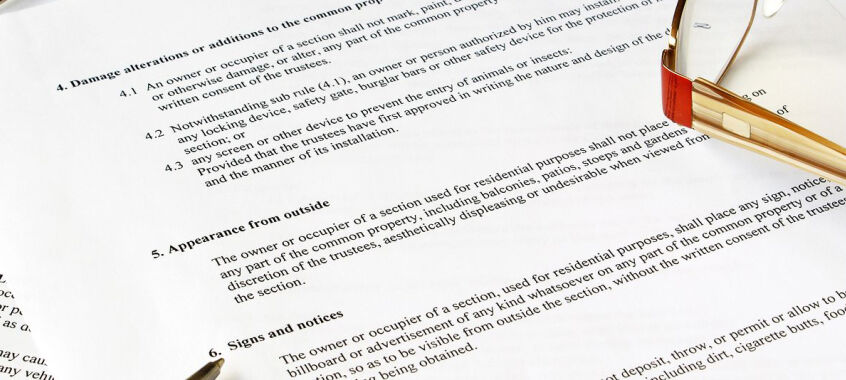Get in touch
If you have any questions relating to this article or have any legal disputes you would like to discuss, please contact Russell May on [email protected]
The recent court of appeal decision in the case of Capitol Park Leeds Plc v Global Radio Services Ltd in June 2021 considered the meaning of vacant possession and whether a tenant can be in breach of contract by removing items from the premises that make up the building itself.

In 2017 the tenant, Global Radio Services, served a break notice to terminate their lease of the premises. One of the conditions of exercising the break notice was that the tenant had to give vacant possession of the premises.
Discussions were held between the parties regarding potential dilapidation issues, but the discussions broke down without agreement between the parties. By the termination date the tenant had stripped out a range of items from the premises including ceiling grids, ceiling tiles, fire barriers, window sills, ventilation duct work, office lighting, smoke detection system, emergency lighting and radiators.
Owing to these additional items being removed from the premises the Landlord contended that the tenant did not give vacant possession of the premises and had therefore failed to comply with the break conditions, meaning that the exercise of the break clause was ineffective and the lease remained valid.
The Judge found that the features that had been removed by the tenant had been part of the original base build specification and so were landlord's fixtures or, perhaps, elements of the building itself.
"By including the words 'all fixtures and fittings at the Premises whenever fixed (except Tenant's fixtures)' and 'all additions and improvements made to the Premises', the Claimant was ensuring that a Tenant exercising its Break Option could not do so by handing back an empty shell of a building which was dysfunctional and unoccupiable.
But in the end, this is what the Defendant did. On my findings, they stopped the work unilaterally in the hope of negotiating a settlement. Those negotiations failed, the clock ran down, and the Defendant gave back considerably less than 'the Premises' as defined in the Lease. It did not give vacant possession. In my view, this is an exceptional case and therefore the second test identified in Cumberland and in Legal & General is satisfied, namely that the physical condition of the Property was such that there is a substantial impediment to the Landlord's use of the Property, or a substantial part of it. Accordingly, I rule that on the 12th November 2017 the Defendant did not give the Claimant vacant possession of 'the Premises' and, as there is no estoppel, the Claimant is entitled to the declaration sought…."
On appeal, the judges found unanimously in favour of the tenant, concluding “in the context of the Lease as a whole, clause 10.1.4 requires the tenant to return the "Premises" as they are on the break date free of the "trilogy of people, chattels, and interests". On that basis, Global's exercise of the break clause was effective and the Lease terminated on 12 November 2017. True it may be that the building was left in a dire state … but that will not have precluded valid exercise of the break clause.”
It was noted that the break clause did not include a condition that the tenant observe and perform the other covenants in the lease. Apparently compounding this, the clauses detailing the regular termination of the lease “stipulates that the Premises must be yielded up with vacant possession "in a state of repair condition and decoration which is consistent with the proper performance of the Tenant's covenants" The lack of mention of repair or condition in the break clause was held to indicate a lack of intention for their inclusion.
The case centred around the interpretation of the word ‘premises’ with the Judge finding favour with the tenant’s interpretation, being “the Premises as they are from time to time”. The Landlord’s insistence that ‘premises’ be interpreted as being “the building which was in existence when the lease was granted” was held to be too strict an interpretation as it could result in a tenant being unable to comply with and terminate a lease in a situation whereby the building had been damaged by an insured risk.
It was also noted that finding in favour of the tenant would not leave the landlord without a remedy for deficiencies in the building; they could still rely on the other clauses in the lease to recover compensation for disrepair.
The decision at first instance placed greater pressure on tenants to ensure the wording of their lease, in regards to the terms of vacant possession, were strictly complied with to ensure the break clause was properly exercised. However, this court of appeal judgment provides much more breathing room, and will be very much welcomed by tenants.
Consistent with our policy when giving comment and advice on a non-specific basis, we cannot assume legal responsibility for the accuracy of any particular statement. In the case of specific problems we recommend that professional advice be sought.
Share:
If you have any questions relating to this article or have any legal disputes you would like to discuss, please contact Russell May on [email protected]

Sign up to receive the latest news on areas of interest to you. We can tailor the information we send to you.
Sign up to our newsletter